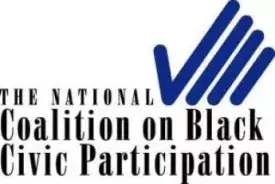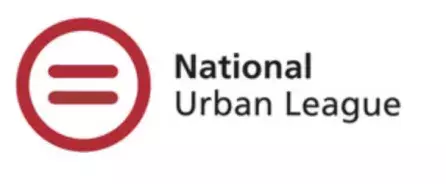
Losing Medicaid: An Equity Disaster
A Preventable Loss of Healthcare
When Medicaid pandemic protections expired on April 1, 2023, states were free to redetermine eligibility and terminate families' Medicaid for the first time since February 2020.
Over a year later, coverage for millions of Medicaid recipients has been terminated - many for administrative reasons. Communities of color are bearing the brunt of these terminations, given that they rely on the program at higher rates than other Americans.
Based on the underlying demographics of Medicaid enrollment, at least 56% of all Medicaid losses came from communities of color. Using the assumption that losses were distributed in proportion to pre-unwinding Medicaid demographics, we estimate that Medicaid now covers:
- Almost 4 million fewer Latinos.
- Nearly 3 million fewer African Americans.
- 590,000 fewer Asian Americans, Native Hawaiians, and Pacific Islanders (AANHPI).
- 530,000 fewer Native Americans.

Holding States Accountable
Before states began removing people from their Medicaid rosters, leading national civil rights organizations warned that historic Medicaid losses could devastate communities of color.
After six months of Medicaid unwinding, the NAACP and civil rights partners released public scorecards on how each state and the District of Columbia performed.
It has become clear that states' elected leaders must make major new commitments to prevent millions of children, families, older adults, and others from losing Medicaid because of missing paperwork. Here's the methodology that was used to score states and the District of Columbia on how they handled Medicaid disenrollments at the six-month mark.
Where We Are Now
More than a year later, the magnitude of the loss and disruption is painstakingly clear. While there was wide variation in how states performed on unwinding, the impact stories are undeniable. And the solutions to fix the broken redetermination process are more urgent than ever.
As of September 2024, the NAACP updated the Medicaid disenrollment rankings of each state and the District of Columbia to track their performance based on publicly available data.
Your State's Medicaid Performance

Maine Ranks #1
Maine is the best-ranked state with the lowest Medicaid procedural disenrollment rate. It has a 7% procedural termination rate out of all completed renewals. Maine had a 3% drop in children's Medicaid coverage, placing it among the ten best-performing states for children's disenrollment. We urge Governor Mills to continue the pathway to fix a broken Medicaid system and drive equity and well-being for all residents.

Rhode Island Ranks #26
Rhode Island is the 26th-ranked state with an average Medicaid procedural disenrollment rate. It has a 23% procedural termination rate out of all completed renewals. However, Rhode Island had a 4% drop in children's Medicaid coverage, placing it among the ten best-performing states for children's disenrollment. We urge Governor McKee to ensure all residents across the lifespan are reconnected to coverage.

Utah Ranks #51
Utah is the worst-ranked state with the highest Medicaid procedural disenrollment rate. It has a 51% procedural termination rate out of all completed renewals. Utah had a 34% drop in children's Medicaid coverage, making it the worst-performing state for children's disenrollment. We urge Governor Cox to re-enroll all wrongfully terminated people and protect the health and well-being of all residents.
10 Worst-Performing States: Ranked by procedural disenrollment rate, the percentage of procedural terminations as compared to all completed renewals
1. Utah
2. Oklahoma
3. Idaho
4. Montana
5. Texas
6. Nevada
7. Georgia
8. West Virginia
9. Tennessee
10. Colorado
Email Your Governor: Advocate for Eligible Families
Over 25 million people have lost health coverage - a preventable health equity disaster.
About 70% of people who lost health coverage may still be eligible but were terminated for "red tape" reasons, such as an email going to spam, a letter being lost in the mail, long call center hold times, or other administrative reasons.
Last year, we warned Congress to take immediate action and prevent millions of children and families from losing health coverage when Medicaid enrollment returned to the pre-pandemic process.
Unfortunately, millions of people living in one of the richest countries in the world still lack sufficient healthcare coverage or access to affordable healthcare plans.
We demand our policy leaders reset the Medicaid enrollment process. Eligible families should not lose coverage because of a broken Medicaid enrollment system.
10 Best-Performing States: Ranked by procedural disenrollment rate, the percentage of procedural terminations as compared to all completed renewals
1. Maine
2. North Carolina
3. Oregon
4. Illinois
5. Connecticut
6. Kentucky
7. New York
8. California
9. Arizona
10. Virgina

Advocating For Your Community
Medicaid is one of the major pathways that ensures that all people have access to high-quality, affordable healthcare coverage. Failure to expand Medicaid and address coverage gaps is disproportionately harming people of color, further exacerbating existing health disparities. View the toolkit to learn how to take action on keeping eligible families covered in your own community.
Our Demands For Medicaid Access
Enhance Enforcement by the Administration
Further enforcement actions may be needed as the level of supplemental Consolidated Appropriations Act funding declines, and the share of Medicaid costs paid by states rises. Many states will do everything they can to retain eligible residents' coverage, but others may not. If anything, the administration may be required to redouble its enforcement efforts to shield eligible Medicaid families from needless procedural terminations in the coming months.
Protect Eligible Families, Hold Procedural Terminations
To prevent procedural terminations, we urge states to focus on administrative burdens. For many families, it is not realistic to expect that they will learn the full details of their situation, determine the precise steps they must take to retain or restore coverage and take such steps on their own in time to prevent termination. Millions of overburdened and under-resourced families will be left behind unless states squarely address the unmanageable administrative burdens such families face.
People Over Procedures: Prioritize Healthcare for Families
On their own, with or without federal intervention, states should combat the epidemic of procedural termination by taking two steps: doing everything possible to renew eligibility based on data matches, including by renewing families whenever the SNAP program has already found them to have income low enough to qualify for Medicaid; and using multiple channels provide overburdened and under-resourced families with the help they need to retain health care, in the face of a redetermination process that far too many families find chaotic and unmanageable. Until such efforts have succeeded in cutting procedural terminations to a minimum level,

Your Story Matters
We want to share the real-life stories of those impacted by this current health coverage crisis. Medicaid is one of the major reasons low-income adults, children, pregnant women, seniors, and people with disabilities have access to high-quality, affordable healthcare coverage. This is more than a policy; it is about everyday people.
Help others understand the impact of this historic health coverage crisis by sharing your story.







